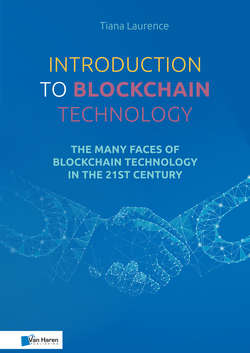Читать книгу Introduction to Blockchain Technology - Tiana Laurence - Страница 29
На сайте Литреса книга снята с продажи.
2.6 Test your knowledge
Оглавление1. What is cryptography?
A. Cryptography is the encryption of data so that it is only known by the intended parties.
B. Cryptography is the mixing of data so that it is only known by you.
C. Cryptography is the publishing of data so that it is readable by everyone.
D. Cryptography is a type of mathematics.
2. What is the Enigma device?
A. The Enigma device was invented by the English to confuse the Germans during WWII.
B. The Enigma device was a computer that changed letters in a message in a complex manner.
C. The Enigma device was a mechanical cryptography device that changed radio channels.
D. The Enigma device was a mechanical cryptography device that changed letters in a message in a complex manner.
3. What is public-key encryption?
A. It uses an asymmetric pair of keys that everyone knows. When you receive a message, you decode it with your key.
B. It uses asymmetric cryptography to allow you to send messages across private channels while keeping the content private.
C. It uses asymmetric cryptography to allow you to send messages across public channels while keeping the content private. It uses a pair of keys, both a public key that everyone knows and a private key only you know. When you receive a message, you decode it with your private key.
D. It uses symmetric cryptography to allow you to send messages across public channels while keeping the content private. It uses a pair of keys, both a public key that everyone knows and a private key only you know.
4. What is a private key?
A. A private key lets you encode messages sent to you over public channels.
B. A private key lets you decode messages sent to you over public channels.
C. A private key lets you enter public channels.
D. A private key lets you publish information on public channels.
5. What is a public key?
A. A public key allows anyone to send you a private message over a public channel.
B. A public key lets you decode messages.
C. A public key opens up a public channel.
D. A public key allows known people to send you a private message over a public channel.
6. What is a hash?
A. A hash is a two-way mathematical proof of data. It creates a digital fingerprint of information and allows you to take a data input of any size and produce a fixed-length string.
B. A hash is a three-way mathematical proof of data. It creates a large data file of information.
C. A hash is a one-way mathematical proof of data. It creates a digital fingerprint of information and allows you to take a data input of any size and produces a fixed-length string.
D. A hash is a one-way mathematical proof of data. It creates a large data file of information.
7. Do you always get the same fixed-length string from a data set when it is hashed?
A. Yes, hashes are deterministic, no matter how many times a block runs through a hash function, you will always get the same result.
B. No, hashes are always unique.
C. Hashes will always give two results.
D. Hashes can be decrypted with a private key.
8. What is a ledger?
A. A ledger is a record of bitcoins.
B. A ledger is a tool for encryption.
C. A ledger is a record of economic transactions.
D. A ledger is device to store bitcoin.
9. In the context of blockchains, what is a “public witness”?
A. A node on a blockchain network is a public witness. It is attesting to the accuracy and truthfulness of information.
B. A witness that attests to its accuracy and truthfulness of information.
C. A digital court house, library, or archive where people store information to reference.
D. A person sending a transaction over a public network.
10. Mining on a blockchain does what three things?
A. Mining hides cryptocurrency, broadcasts transactions and publishes a history of transactions.
B. Mining creates new cryptocurrency, confirms transactions and secures the blockchain’s history.
C. Mining creates new cryptocurrency, blocks bad transactions and secures the blockchain’s history.
D. Mining creates tokens, confirms assets and secures the blockchain’s history.
